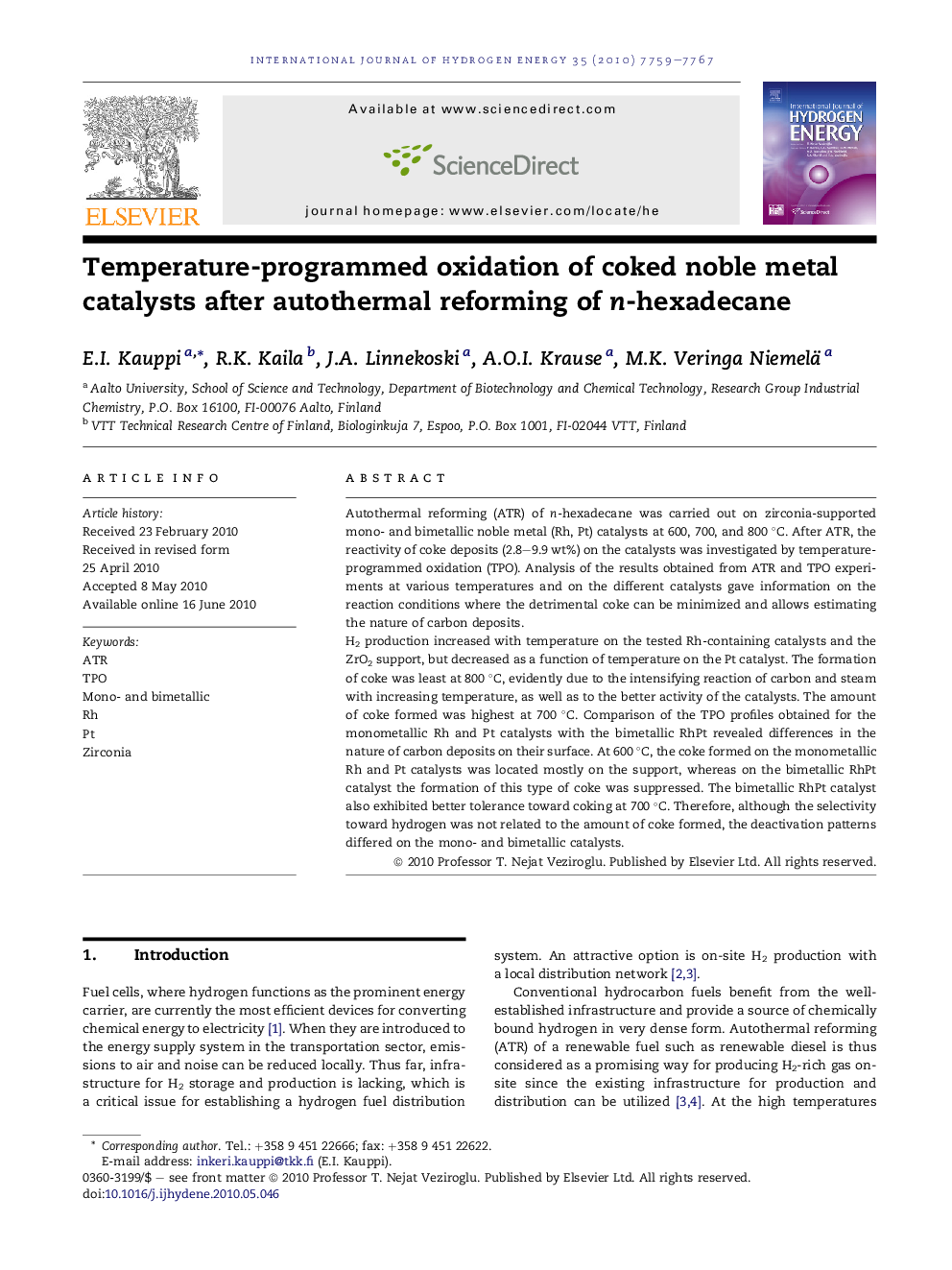| Article ID | Journal | Published Year | Pages | File Type |
|---|---|---|---|---|
| 1277951 | International Journal of Hydrogen Energy | 2010 | 9 Pages |
Autothermal reforming (ATR) of n-hexadecane was carried out on zirconia-supported mono- and bimetallic noble metal (Rh, Pt) catalysts at 600, 700, and 800 °C. After ATR, the reactivity of coke deposits (2.8–9.9 wt%) on the catalysts was investigated by temperature-programmed oxidation (TPO). Analysis of the results obtained from ATR and TPO experiments at various temperatures and on the different catalysts gave information on the reaction conditions where the detrimental coke can be minimized and allows estimating the nature of carbon deposits.H2 production increased with temperature on the tested Rh-containing catalysts and the ZrO2 support, but decreased as a function of temperature on the Pt catalyst. The formation of coke was least at 800 °C, evidently due to the intensifying reaction of carbon and steam with increasing temperature, as well as to the better activity of the catalysts. The amount of coke formed was highest at 700 °C. Comparison of the TPO profiles obtained for the monometallic Rh and Pt catalysts with the bimetallic RhPt revealed differences in the nature of carbon deposits on their surface. At 600 °C, the coke formed on the monometallic Rh and Pt catalysts was located mostly on the support, whereas on the bimetallic RhPt catalyst the formation of this type of coke was suppressed. The bimetallic RhPt catalyst also exhibited better tolerance toward coking at 700 °C. Therefore, although the selectivity toward hydrogen was not related to the amount of coke formed, the deactivation patterns differed on the mono- and bimetallic catalysts.
